
Journal of Transportation Engineering Part A-Systems
Scope & Guideline
Pioneering Research for Efficient and Sustainable Infrastructure
Introduction
Aims and Scopes
- Traffic Flow and Control Systems:
Research in this area focuses on optimizing traffic flow through advanced modeling, control strategies, and the implementation of intelligent transportation systems (ITS). This includes studies on traffic signal optimization, traffic incident detection, and dynamic traffic management. - Sustainable Transportation Solutions:
The journal emphasizes sustainable practices in transportation, including studies on electric and autonomous vehicles, public transportation systems, and the integration of green technologies to reduce environmental impacts. - Safety and Risk Assessment:
This area covers research aimed at improving road safety through the analysis of accident data, driver behavior, and safety performance measures. It includes methodologies for assessing crash risk and evaluating safety interventions. - Mobility and Accessibility Analysis:
Research in this scope examines the accessibility of transportation systems for various user groups, including studies on public transit, bike-sharing, and pedestrian infrastructure, focusing on enhancing mobility in urban environments. - Data Analytics and Machine Learning Applications:
The journal highlights the use of big data and machine learning techniques to analyze transportation systems, predict travel patterns, and enhance decision-making processes in transportation management.
Trending and Emerging
- Connected and Autonomous Vehicles (CAVs):
Research focusing on the integration of connected and automated vehicles into existing transportation systems is rapidly increasing. This includes studies on vehicle-to-everything (V2X) communication, safety implications, and the impact of CAVs on traffic flow. - Smart Mobility Solutions:
There is a growing emphasis on smart mobility, encompassing innovative transportation solutions that leverage technology, such as ride-sharing, mobility-as-a-service (MaaS), and the integration of various transport modes. - Data-Driven Decision Making:
The use of big data analytics for transportation planning and management is trending. Research exploring data-driven models for traffic prediction, demand forecasting, and real-time traffic management is becoming increasingly prominent. - Resilience and Sustainability in Transportation Systems:
Research exploring the resilience of transportation networks in the face of disruptions (e.g., natural disasters, pandemics) and the integration of sustainability in transportation planning is gaining momentum. - Behavioral Analysis of Transportation Users:
Emerging studies focusing on understanding user behavior, preferences, and decision-making processes in transportation systems are on the rise, particularly in the context of changing societal norms post-COVID-19.
Declining or Waning
- Traditional Traffic Engineering Models:
There has been a noticeable decline in the publication of papers focused solely on traditional traffic engineering models. As more researchers adopt advanced computational techniques and data-driven approaches, traditional methods are becoming less prominent. - Static Infrastructure Studies:
Research centered on static infrastructure, such as fixed traffic signals and conventional road designs, is receiving less attention. The shift towards dynamic and adaptive systems reflects the evolving nature of transportation technologies. - Manual Traffic Studies:
Papers that rely solely on manual data collection and observational studies are decreasing. The increasing reliance on automated data collection methods, such as sensors and machine learning, is rendering older methodologies less relevant.
Similar Journals

IEEE Open Journal of Intelligent Transportation Systems
Connecting Ideas for Intelligent Systems.IEEE Open Journal of Intelligent Transportation Systems, published by the IEEE-INST ELECTRICAL ELECTRONICS ENGINEERS INC, stands at the forefront of innovation in the realm of intelligent transportation systems since its inception in 2020. With its open-access format, this journal aims to disseminate groundbreaking research and technology advancements to a broader audience, fostering collaboration and knowledge exchange among professionals in the automotive, mechanical, and computer science engineering sectors. It boasts impressive Q1 rankings in Automotive Engineering, Computer Science Applications, and Mechanical Engineering as of 2023, highlighting its critical role in shaping the future of transportation technologies. The journal's exceptional standing is further evidenced by its Scopus rankings; it holds the 76th percentile in Mechanical Engineering and the 74th percentile in Automotive Engineering, making it a premier outlet for cutting-edge research. Researchers, professionals, and students seeking to navigate the evolving challenges and solutions in intelligent transportation systems will find this journal an invaluable resource.
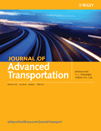
JOURNAL OF ADVANCED TRANSPORTATION
Empowering Global Collaboration in Transportation StudiesJOURNAL OF ADVANCED TRANSPORTATION, published by WILEY-HINDAWI, stands as a pivotal platform in the fields of automotive engineering, computer science applications, economics, mechanical engineering, and strategy and management. With an impressive impact factor and positioned in the Q2 quartile across multiple categories as of 2023, this open-access journal offers researchers, professionals, and students unparalleled opportunities to disseminate and access cutting-edge research. Operating under an open access model since 2017, the journal fosters global collaboration and knowledge exchange, encouraging innovative solutions to contemporary transportation challenges. Its comprehensive scope, spanning converged years from 1979 to 2024, reflects its commitment to addressing the evolving landscape of transport systems worldwide. Researchers from diverse disciplines are invited to contribute transformative studies that advance the field and inspire future endeavors.

Transportation Safety and Environment
Transforming transportation through safety and ecological insights.Transportation Safety and Environment is an esteemed open-access journal published by Oxford University Press, dedicated to advancing the field of transportation safety and environmental sustainability. Since its inception in 2019, the journal has rapidly gained recognition with an impressive Q2 category ranking in Control and Systems Engineering, Engineering (miscellaneous), and Safety, Risk, Reliability and Quality as of 2023. With an E-ISSN of 2631-4428, it provides a platform for high-quality research that addresses critical safety challenges and environmental impact within the transportation sector, covering a wide array of topics from vehicle safety measures to ecological considerations in transportation infrastructure. The journal’s open-access model promotes widespread distribution and accessibility of research findings, enabling researchers, professionals, and students to engage with the latest advancements and contribute to future developments in the field. Located in the heart of the United Kingdom at Great Clarendon St, Oxford OX2 6DP, England, Transportation Safety and Environment stands at the forefront of fostering innovative solutions for safer and more sustainable transportation practices worldwide.

Frontiers in Future Transportation
Transforming Tomorrow's TravelFrontiers in Future Transportation, published by FRONTIERS MEDIA SA, is an influential Open Access journal that has been at the forefront of research since its inception in 2020. With an ISSN of N/A and E-ISSN 2673-5210, this journal provides a comprehensive platform for cutting-edge studies in the field of transportation, encompassing urban studies, automotive engineering, and innovative control systems. Ranking impressively in Scopus with notable percentiles—61st in Urban Studies, 51st in Automotive Engineering, and others—it underscores its significance within the scholarly community. The journal is committed to advancing the discourse surrounding sustainable and smart transportation solutions that address the challenges of future mobility. By offering unrestricted access to research, it invites contributions from researchers, professionals, and students alike, fostering collaboration and disseminating knowledge pivotal to transforming transportation systems globally. With its headquarters based in Lausanne, Switzerland, Frontiers in Future Transportation is poised to make substantial contributions to the evolving landscape of transport research through 2024 and beyond.
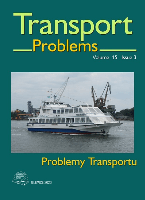
Transport Problems
Transforming Ideas into Solutions for a Sustainable FutureTransport Problems, published by the Silesian University of Technology, Faculty of Transport, is a distinguished open-access journal that has been advancing scholarship in the fields of Automotive Engineering, Mechanical Engineering, and Transportation since its inception in 2007. With an ISSN of 1896-0596 and an E-ISSN of 2300-861X, this journal serves as a vital platform for researchers and practitioners to disseminate innovative research findings and explore fundamental issues in transport systems and technologies. Based in Poland, the journal covers various topics including transportation logistics, vehicle dynamics, and environmental impacts, thereby addressing critical challenges faced in the transportation sector globally. As reflected in its Scopus rankings, the journal occupies respectable quartiles and continues to contribute valuable insights to the academic community. By making its content freely accessible, Transport Problems significantly enhances the ability of researchers and students alike to engage with the latest developments in transport engineering and contribute to this ever-evolving field.
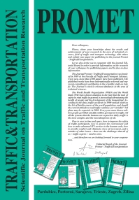
Promet-Traffic & Transportation
Shaping Sustainable Transportation Systems WorldwidePromet-Traffic & Transportation is a premier open-access journal published by SVEUCILISTE U ZAGREBU, FAKULTET PROMETNIH ZNANOSTI, dedicated to advancing the fields of traffic and transportation engineering. Since its inception in 2001, the journal has played a crucial role in disseminating innovative research and best practices within its scope, which embraces civil and structural engineering, urban studies, and various engineering disciplines. With a Q3 ranking in multiple categories as of 2023, including Civil and Structural Engineering and Ocean Engineering, Promet is positioned to provide valuable insights into contemporary challenges and solutions in transportation systems. Open-access since 2013, the journal ensures that all published articles are freely available to researchers, practitioners, and students globally, fostering a collaborative environment for knowledge exchange. Based in Croatia, it serves as an essential platform for interdisciplinary studies that influence the future of traffic and transportation policies and practices.
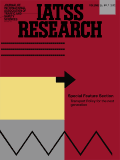
IATSS Research
Exploring the future of transportation through cutting-edge scholarship.IATSS Research, published by Elsevier Science Ltd, stands as a premier open-access journal at the intersection of engineering, safety research, urban studies, and transportation. Established in 2000, this esteemed journal caters to a diverse audience of researchers, industry professionals, and students eager to delve into innovative research that addresses pressing societal challenges. With an impressive impact factor and a consistent demonstration of high-quality scholarship, IATSS Research has achieved notable rankings within Scopus, including a top-tier position in Safety Research (Rank #13/109, 88th percentile) and Engineering (Rank #46/307, 85th percentile). The journal has evolved significantly since its inception, reflecting the dynamic nature of its converged fields from 2008 to 2024. By embracing open access, IATSS Research amplifies the reach of critical findings and fosters collaboration across disciplines, making it an invaluable resource for anyone invested in advancing knowledge and practices in modern engineering and urban safety.

International Journal of Intelligent Transportation Systems Research
Fostering Knowledge for Safer, Efficient TravelInternational Journal of Intelligent Transportation Systems Research, published by Springer, stands as a premier platform for disseminating cutting-edge research in intelligent transportation systems (ITS). Established in 2010, this journal has made significant strides in addressing the complexities and innovations within the realm of transportation engineering, automotive technology, control systems, and information systems, reflected in its impressive categorization across diverse engineering and applied mathematics disciplines with notable rankings in Q2 and Q3 quartiles. With a steadfast commitment to advancing knowledge and fostering discussions that bridge academia and industry, the journal welcomes high-quality research articles, reviews, and case studies that explore emerging trends, technologies, and methodologies shaping the transport sector. Researchers, professionals, and students alike will find a wealth of insights aimed at optimizing operational efficiencies and enhancing safety and sustainability in transportation networks. As of 2023, the journal continues to thrive, seeking to compile contributions that align with its mission of improving transportation systems globally.
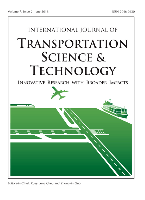
International Journal of Transportation Science and Technology
Exploring the intersection of engineering and transportation solutions.The International Journal of Transportation Science and Technology, published by KEAI PUBLISHING LTD, stands as a pivotal resource in the fields of transportation, automotive engineering, civil and structural engineering, and policy management. With a robust Open Access model since its inception in 2012, this journal provides unparalleled visibility to research that impacts real-world transportation systems and infrastructure. The journal proudly holds a Q1 category ranking in crucial engineering fields, reflecting its high impact and quality of published research. Its diverse scope and comprehensive coverage make it an essential platform for researchers, professionals, and students alike who are eager to contribute to the advancement of transportation science and technology. With impressive Scopus rankings underscoring its relevance in environmental science and social sciences related to transport, the International Journal of Transportation Science and Technology continues to foster innovation and influence policy development globally, addressing the challenges of modern transportation systems.
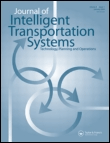
Journal of Intelligent Transportation Systems
Transforming Transportation Through Cutting-Edge ResearchThe Journal of Intelligent Transportation Systems is a premier peer-reviewed journal published by Taylor & Francis Inc, focusing on cutting-edge research in the fields of transportation systems and intelligent technologies. With an ISSN of 1547-2450 and an E-ISSN of 1547-2442, this journal stands out with its impressive impact, consistently ranking in the Q1 Quartile across multiple categories such as Aerospace Engineering, Applied Mathematics, and Automotive Engineering, among others. As of 2023, it holds distinguished Scopus rankings, including a remarkable #11 position in Aerospace Engineering, showcasing its significance in shaping contemporary research in intelligent transportation. Targeted at researchers, professionals, and students alike, the journal provides a forum for the dissemination of innovative ideas and technologies that enhance transportation systems’ efficiency, safety, and sustainability. The Journal of Intelligent Transportation Systems has been operating since 2004 and continues to play a vital role in advancing knowledge within its respective areas of study within the United Kingdom and globally.